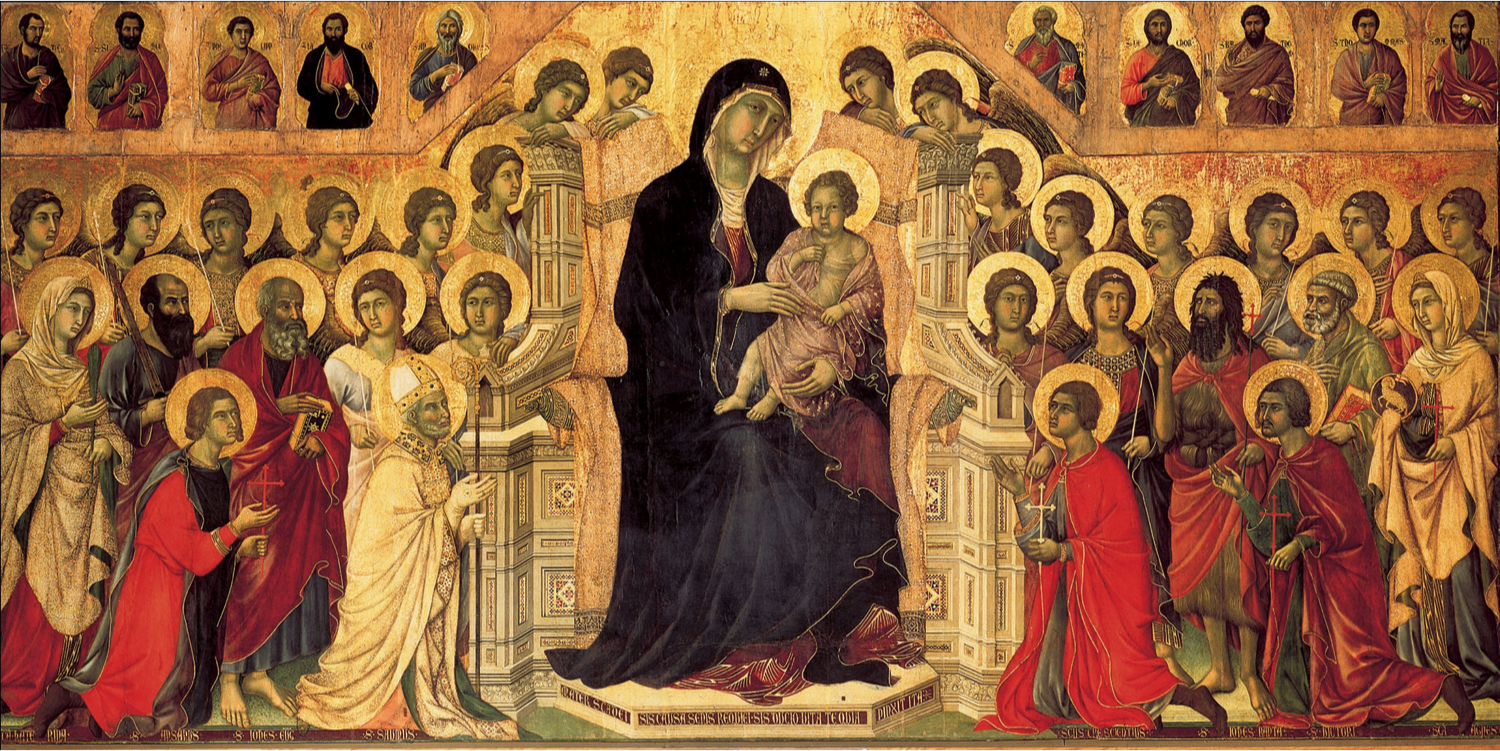29th May 2021
Devotion to Mary
Adam Coates
As May comes to a close, we come to the final post in this series dedicated to Mary. We’ve taken the opportunity of using this month, which the Church has set aside as a time of devotion to Mary, to get to know her better. In this final post, we want to conclude with a few thoughts on Marian devotion.
We have already established the essential nature of Mary’s role in salvation history over the course of the previous posts. It is her ‘yes’ which opens the door of Salvation; it is the singular grace of the Immaculate Conception that enables this ‘yes’ and the perfect discipleship that followed. We have seen how this enabled her to take on a new mission as Mother of the Church, and how Our Lady was assumed into Heaven and crowned as its Queen. This alone should be enough to understand that she is a model worth emulating. However, what of the topic of devotion to Our Lady?
The answer is found within Sacred Scripture. Mary announces that ‘all generations will call me blessed’ (Luke 1:48). And indeed we should. St. Paul VI explains that the devotion of the Church to the Virgin Mary “is intrinsic to Christian worship” and that it has consistently been a feature of Christian worship, “from the blessing with which Elizabeth greeted Mary (cf. Lk. 1:42-45) right up to the expressions of praise and petition used today”. St. Paul VI continues to note that the Church’s devotion is a special one, greater than that offered to any other Saint, because of the “the singular dignity of Mary”. However, and as the Catechism explains, it is essential to mention that this devotion “differs essentially” from the worship given to the Almighty Trinity. As St. Paul VI further notes, this devotion is “subordinated to worship of the divine Saviour and in connection with it”. This is exactly the point of devotion to the Virgin Mary: Mary is the perfect disciple of the Lord and true devotion to her necessarily points to her Son. St. Louis de Montfort, one of the most important Saints in advancing devotion to Our Lady, explains that “Jesus Christ is the ultimate end of devotion to Our Lady … If, then, we are establishing solid devotion to Our Blessed Lady, it is only to establish more perfectly devotion to Jesus Christ, to provide an easy and sure means of finding Jesus Christ”. Mary is an intercessor between us and Jesus, designed to help draw us closer to her Son. This is meaning of our devotions to Mary and all the Saints: they intercede for us before Christ, and provide an example for us to follow.
The Church has many practical means of devotion to Our Lady. Her Son’s disciples have been ever creative in honouring her through poetry, songs, music, paintings, sculpture, and other forms of art; but most importantly of all, through prayer. Many Popes have continually recommended the Rosary to the faithful. The Rosary takes the form of a series of short meditations on the great events of salvation history by the means of repetitions of the Hail Mary. As Pope Pius XII explains, by “the frequent meditation on the Mysteries, the soul little by little and imperceptibly draws and absorbs the virtues they contain, and is wondrously enkindled with a longing for things immortal, and becomes strongly and easily impelled to follow the path which Christ Himself and His Mother have followed. … [and] has … the admirable quality of infusing confidence in him who prays and brings to bear a gentle compulsion on the motherly Heart of Mary”.
The Angelus, too, is strongly recommended and, in a tradition started by St. John XXIII, the Pope leads the faithful of Rome in the Angelus every Sunday at noon. It consists of a short recollection of and meditation on the events of the Annunciation, and thereby provides a practical means to think upon that essential moment in salvation history throughout the day. It is traditionally recited in the morning, at noon, and in the evening. The seven sorrows of Mary, examined in our post on Mary as the Mother of Sorrows, has also provided a traditional focus for meditation, thinking upon the hardships which Mary suffered and united with her Son, sorrows suffered for His sake. Many more devotions to Mary have arisen throughout the history of the Church besides these, but the one thing that should remain clear are that all these devotions to the Virgin Mary are also, at their end, devotions to her Blessed Son.
Thus, we hope that this series of posts will help people to draw closer to Mary, and through her, to Jesus. We will finish with the words of the great St. Maximillian Kolbe: “Never be afraid of loving Mary too much. You can never love her more than Jesus did”.
Further reading
- St. Louis de Montfort, The True Devotion to the Blessed Virgin
- Pope Pius XII, Ingruentium Malorum
- St. Paul VI, Marialis Cultus, 56-57
- Catechism of the Catholic Church, 971
- Rosary Centre, How to Pray the Rosary
- Catholic Answers, The Rosary
- Simply Catholic, What is the Angelus?
- The Diocese of Brooklyn, Where is the Hail Mary in the Bible?
- Catholic Culture, Month of the Seven Sorrows of Mary

